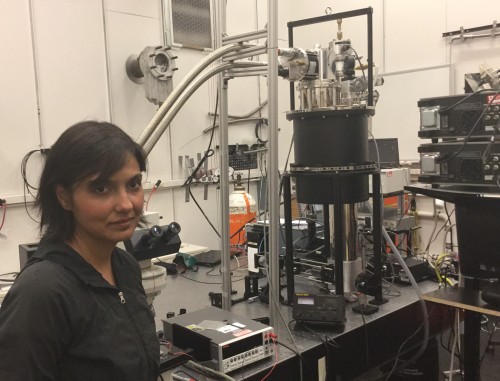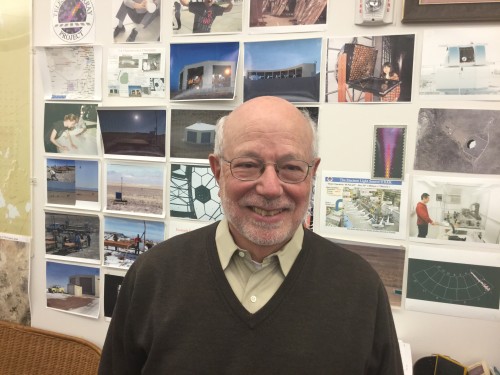
A blooming marvellous afternoon at the University of Utah.
By Hamish Johnston in Salt Lake City
Yesterday afternoon I hopped on a tram bound for the University of Utah. As you can see in the above photo, spring has sprung in Salt Lake City and the campus was resplendent in blossoms with views over snow-capped mountains.
I was at the university to film several 100 Second Science videos with Utah physicists including Shanti Deemyad, who studies the properties of matter under extremely high pressures. She is particularly interested in understanding the quantum properties of solids at temperatures near absolute zero – properties that can be enhanced when materials such as lithium are squeezed at pressures that are more than 10 million times greater than Earth’s atmosphere. This is done using a diamond anvil and Deemyad’s lab has 20 or so of them.

Shanti Deemyad in one of her labs in Utah.
I also had a nice chat with Gordon Thomson, who works on the Telescope Array high-energy cosmic-ray observatory. The observatory comprises 507 scintillation detectors spread over about 700 square kilometres of desert in southern Utah. The facility can detect cosmic rays with energies up to about 108 TeV and Thomson told me that there are plans afoot to increase the size of the detector by a factor of four.

Utah’s Gordon Thomson with photos of the Telescope Array.
Polymer spintronics is the passion of Cristoph Boehme, who I also visited yesterday. He is particularly interested in developing materials with spin states that couple very strongly to electron transport. In such materials a very small change in applied magnetic field can result in a big change in electrical current, making them highly sensitive magnetic-field detectors. What’s more, says Boehme, is that these sensors work at room temperature (unlike comparable devices that are cryogenic) and never need to be calibrated.

Christoph Boehme of the University of Utah.
Boehme has a new paper out about the “inverse spin Hall effect” and you can read about it here: “A new way to get electricity from magnetism“.
Guidelines
Show/hide formatting guidelines
this text was deletedwhere people live in harmony with nature and animals</q>
Some text